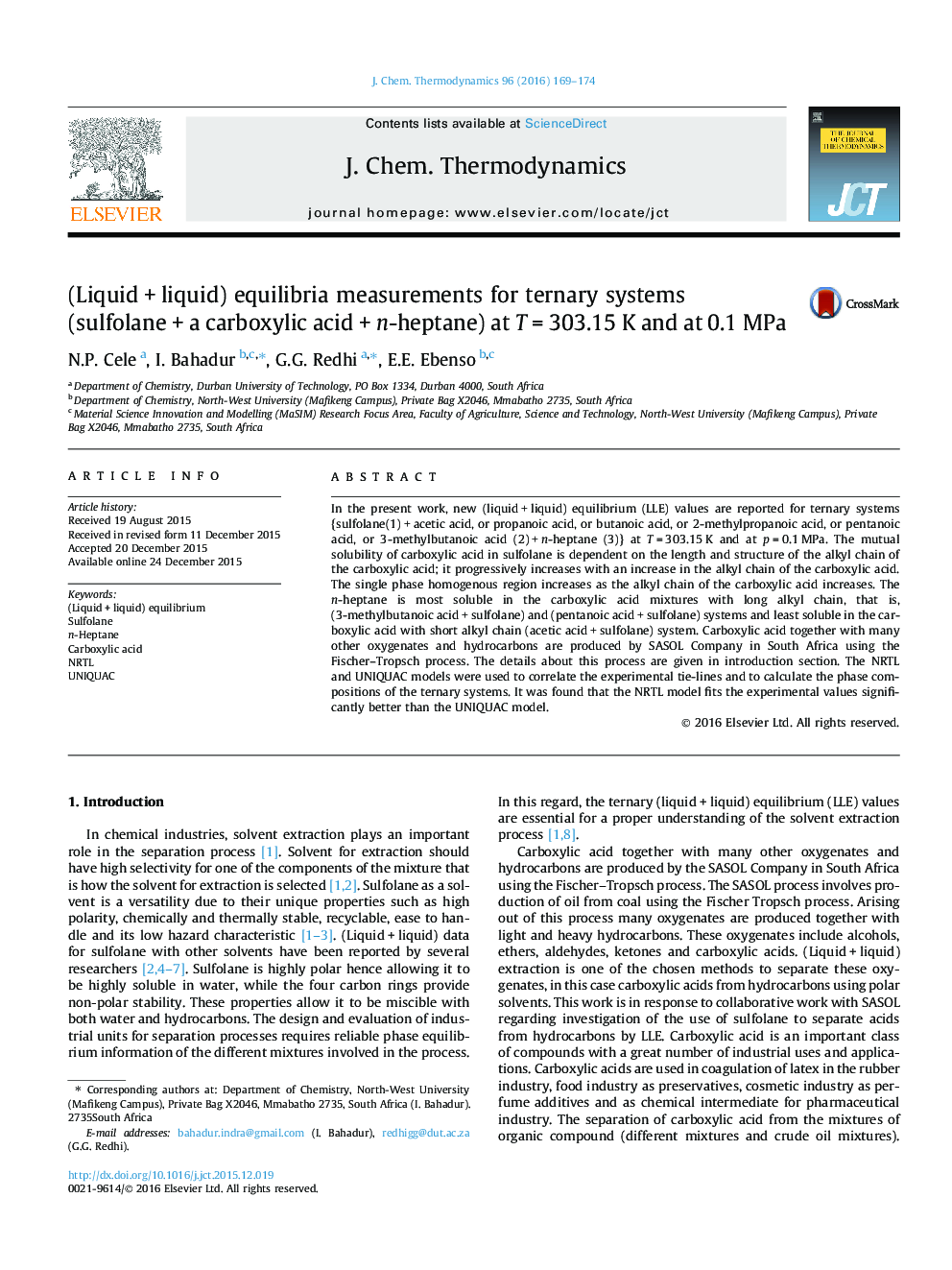| Article ID | Journal | Published Year | Pages | File Type |
|---|---|---|---|---|
| 215076 | The Journal of Chemical Thermodynamics | 2016 | 6 Pages |
•The (liquid + liquid) equilibrium for (sulfolane + a carboxylic acid + heptane) was measured.•Selectivity values for solvent separation efficiency were calculated.•Separation of carboxylic acids from heptane is feasible by extraction.•Three parameter equations have been fitted to the binodal curve data.•The NRTL and UNIQUAC models were used to correlate the experimental data.
In the present work, new (liquid + liquid) equilibrium (LLE) values are reported for ternary systems {sulfolane(1) + acetic acid, or propanoic acid, or butanoic acid, or 2-methylpropanoic acid, or pentanoic acid, or 3-methylbutanoic acid (2) + n-heptane (3)} at T = 303.15 K and at p = 0.1 MPa. The mutual solubility of carboxylic acid in sulfolane is dependent on the length and structure of the alkyl chain of the carboxylic acid; it progressively increases with an increase in the alkyl chain of the carboxylic acid. The single phase homogenous region increases as the alkyl chain of the carboxylic acid increases. The n-heptane is most soluble in the carboxylic acid mixtures with long alkyl chain, that is, (3-methylbutanoic acid + sulfolane) and (pentanoic acid + sulfolane) systems and least soluble in the carboxylic acid with short alkyl chain (acetic acid + sulfolane) system. Carboxylic acid together with many other oxygenates and hydrocarbons are produced by SASOL Company in South Africa using the Fischer–Tropsch process. The details about this process are given in introduction section. The NRTL and UNIQUAC models were used to correlate the experimental tie-lines and to calculate the phase compositions of the ternary systems. It was found that the NRTL model fits the experimental values significantly better than the UNIQUAC model.
